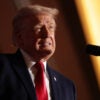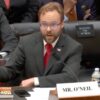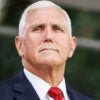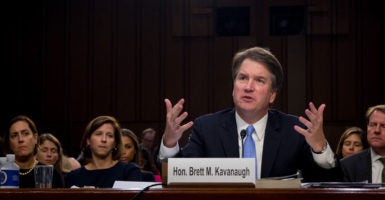After a marathon 13 hours of questioning on Wednesday, Supreme Court nominee Brett Kavanaugh’s confirmation hearings continued Thursday with more questions from the senators.
Protesters continued to punctuate the senators’ questions throughout the day, and a dozen or so of the girls Kavanaugh has coached on basketball teams showed up in the afternoon to support “Coach K.”
Here are the key takeaways from Kavanaugh’s final day before the Senate Judiciary Committee.
1. Booker’s ‘disclosed’ documents were a nothing burger—and a publicity stunt.
The morning began with the dramatic announcement by Sen. Cory Booker, D.-N.J., that “I am going to release [an e-mail from Kavanaugh’s record] about racial profiling, and I understand that the penalty comes with potential ousting from the Senate.” That decision earned Booker a stern rebuke from some Republican senators.
It turns out, however, that the documents Booker had discussed in the hearing and “released” had already been cleared for public release the night before. He wasn’t defying anyone.
So far, more than 350,000 pages of material from or about Kavanaugh’s professional work have been made available to the public. That’s more than for the past five Supreme Court nominees combined.
This week’s discussion about documents, however, has failed to clarify that different federal statutes set rules for handling different categories of material.
The Federal Records Act, for example, governs documents from Kavanaugh’s work as an associate independent counsel, while the Presidential Records Act governs the documents from his work as an associate White House counsel.
Most documents can be made publicly available right away, while others require more review but are still made available to the committee members and staff. That’s what the label “committee confidential” means.
Booker, apparently objecting to any documents being designated “committee confidential,” took matters into his own hands and released emails from Kavanaugh’s time serving in the White House counsel’s office. Booker gave the impression that this was a dramatic, defiant, and perhaps even dangerous step, saying: “This is about the closest I’ll probably ever have in my life to an ‘I am Spartacus’ moment … [and] I’m knowingly violating the rules.”
Later in the day, Booker released more confidential documents. Senate Judiciary Committee Chairman Charles Grassley, R-Iowa, has repeatedly invited senators simply to request public release of particular documents and proven that he’s willing to do so. Given that, Booker simply could have made a request rather than make this look more like a publicity stunt.
In the emails, Kavanaugh discussed racial profiling in airport security screening following the Sept. 11 terrorist attacks. He wrote that he “generally favor[ed] effective security measures that are race-neutral.”
Booker made it sound like the emails might somehow expose Kavanaugh as a proponent of racial profiling. It turns out the opposite was true.
In another email chain, leaked to The New York Times, Kavanaugh had reviewed a draft op-ed supporting one of President George W. Bush’s judicial nominees that stated “legal scholars across the board” agree that Roe v. Wade is “the settled law of the land.” Kavanaugh also wrote: “I am not sure that all legal scholars refer to Roe as the settled law of the land at the Supreme Court level.”
At the hearing Thursday, Sen. Dianne Feinstein, D-Calif., asked what he meant by that, and Kavanaugh explained that he suggested deleting a line from the draft op-ed since there are plenty of scholars who do not believe that Roe v. Wade is settled.
Far from being revelatory bombshells, these emails show Kavanaugh providing straightforward advice as an attorney working for the president. Addressing those issues in that role is not at all the same as a judge addressing those issues in the context of actual cases with real parties and specific facts.
2. Feinstein earned four Pinocchios.
Two of Feinstein’s exchanges with Kavanaugh from Day Two of the hearing included some obvious factual errors. First, she claimed that between 200,000 and 1.2 million women died from illegal abortions in the 1950s-60s, pointing to a report by the pro-abortion Guttmacher Institute.
But those numbers actually refer to the estimated number of illegal abortions during those years, not the number of women who died from them. The death statistic was around 200-300 per year. That’s a pretty big discrepancy.
Second, in questioning Kavanaugh about the Second Amendment, Feinstein stated that there have been “hundreds of school shootings using assault weapons.” Once again, Feinstein got her numbers wrong. As Jacob Sullum at Reason explained (citing a Mother Jones database of mass shootings), only six attacks at schools involved “assault weapons.” That’s far short of the “hundreds” Feinstein claimed.
3. Senate approved other nominees over lunch.
When the committee broke for lunch Thursday, senators made a quick detour to the Senate floor to confirm eight nominees to the U.S. District Court. Only two required a formal recorded vote (the tallies were 60-35 and 79-12).
This brings President Donald Trump’s total number of confirmations to 68 judges (including Justice Neil Gorsuch). Yet during the same time, the number of judicial vacancies has ballooned to 134. That’s nearly 30 percent higher than when Trump took office.
Grassley and Majority Leader Mitch McConnell, R-Ky., should be commended for continuing to confirm at least some lower court nominations in the middle of Kavanaugh’s confirmation process.
With the conclusion of Day Three, Kavanaugh’s time in the hot seat has come to an end. On the final day, outside witnesses—including representatives from the American Bar Association, law professors, litigators, and former law clerks, among others—will testify before the committee.
Then, in the coming weeks, the committee will hold a vote to report his nomination to the full Senate.






























